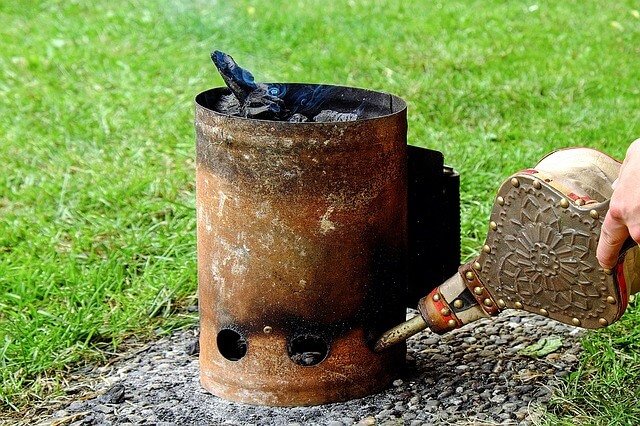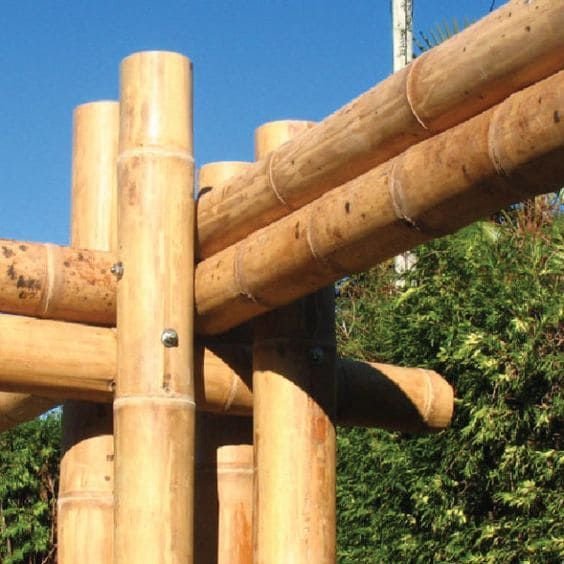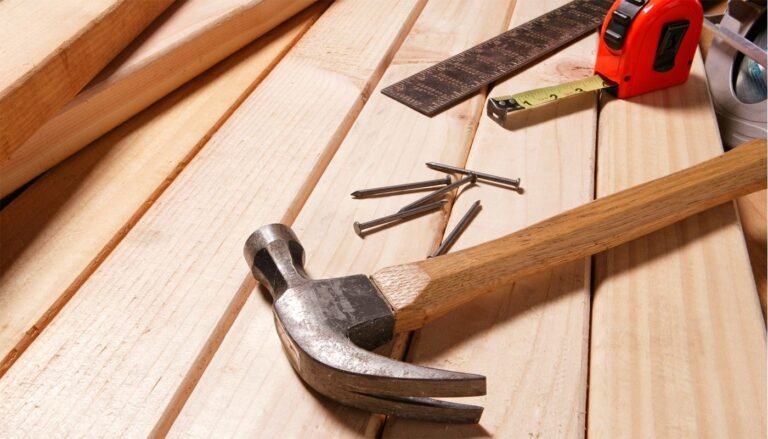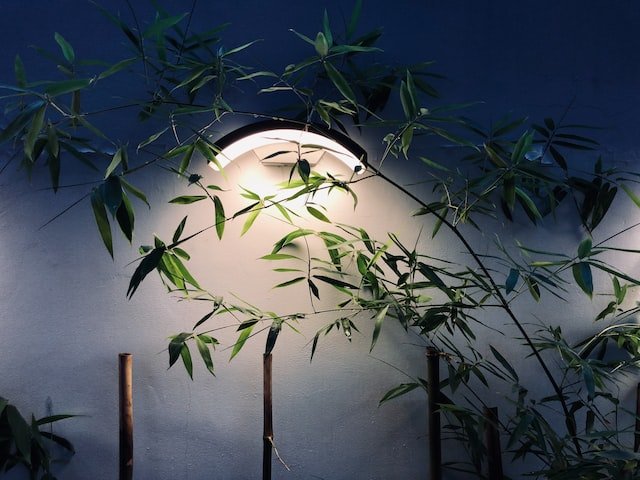How To Make Bamboo Charcoal At Home

0Shares
Bamboo charcoal has recently and, for good reasons, received a lot of attention. Please continue reading to understand everyone’s fascination with this excellent material, learn more about its uses, and learn exactly what it is and how it works. Do you know how to make bamboo charcoal at home?
Bamboo charcoal has been a popular medium for the filtration and medicinal component in Asia, particularly in Japan, China, Korea, and Taiwan for centuries. However, the uses and benefits of this material only became apparent in recent years to Westerners. It is an efficient, environmentally friendly deodorizer and purifier with many additional uses.
Procedure In Bamboo Charcoal Making
The carbonization of bamboo can be split into four stages, depending on the temperature and product situation in a kiln. Here’s one of the ways on how to make bamboo charcoal at home.
Drying in the first stage.
The temperature is below 120 ° C, and the carbonization speed is slow. Heat is used to evaporate bamboo water, and the chemical composition of bamboo remains unchanged.
Precarbonization in the second stage.
The temperature ranges from 120 ° C to 260 ° C, and the bamboo’s chemical reactions are distinct. The unstable chemical compounds are beginning to decompose, releasing carbon dioxide and carbon monoxide.
Carbonization in the third stage.
The temperature ranges from 260 ° C to 450 ° C, and bamboo is broken down into liquid and gas products. Liquid products contain a lot of acetic acids, bamboo tar, and methanol. In gas products, flammable methane and ethylene increase while the production of carbon dioxide is reduced.
Calcinations in the fourth stage (refining stage).
The temperature is above 450 degrees Celsius. The bamboo is turned into charcoal by supplying heat mass, emitting volatile substances, and increasing the volatile carbon.
The charcoal of bamboo can be divided into three groups based on the temperature at the present stage (low-temperature, medium-temperature, and high-temperature charcoal). Bamboo charcoal quality and characteristics differ at different temperatures during the refining phase.
Finally, the bamboo can cool down and depend on the weather; it can take five to eight days in large quantities. Alcohol, tar, vinegar, medicinal fluid (water form), and many other products can be extracted during the above process.
Bamboo charcoal products are used in countless ways-skin diseases, allergies, influenza, heart disease, stomach, insecticides, pesticides, germination, bactericides, deodorants, gardening, cosmetics, cooking, washing, etc.
Before you can activate and use charcoal in various preparations, you must first produce the charcoal itself. Good news is easy, and in your backyard, you can do something – great for avid DIYers! Here’s a simple way on how to make bamboo charcoal at home.
The first step is to collect all your ingredients, so it is time for you to start making charcoal. You also need a fireplace with a cover in addition to bamboo for burning. Charcoal can traditionally be made in pits on the ground, in kilns, or old tubes.
Begin by breaking your bamboo stalks into your burning area. After the wood has become charcoal, you must remove it from the pit and pile it into the ground. Top them, like an old grill, and pour the sand on the bottom to make the lid airtight.
This allows the carbons to cook their humidity away. It also ensures the removal of all volatile gases and the high quality of your charcoal. You will find your coals burned out after about an hour.
A small pool of black coals will be dispersed over the top with a thin layer of dust. Allow the coals to completely cool so that you don’t burn before they are broken into smaller parts. It is easy to use a hammer or briefcase to break black coals and rinse them in running water.
Additional Step
Some are stopping here because this charcoal is ideal for water filters or feeding chickens into a flock. But if you want a powder, use an old mixer to carefully grind the charcoal bits in a speck of fine dust.
How To Make Bamboo Charcoal At Home: Activated Charcoal
Activated carbon is useful to purify contaminated water or air, sometimes referred to as activated carbon. Activated charcoal may be used in emergencies to remove dangerous toxins and toxins from your body. Here’s how to make bamboo charcoal at home; activated charcoal.
You will first need to make homemade charcoal by burning wood or fibrous plant material before you activate the charcoal. You are then prepared to add active chemicals like calcium chloride or lemon juice and complete the activation process.
Step 1
Pack a metal pot with small hardwood pieces. When hardwood is not available, almost any dense, fibrous plant material, such as coconut shells, can be replaced.
Place your hardwood parts or plant material in a metal pot and cover it with a lid. The deck of your pot should have a vent hole, but airflow into the pot should be limited during the entire process. You can use a camp cookware kettle so that the air, for example, can escape.
Before you put the material into the pot, it must be as dry as possible.
Step 2
Cook the pot for 3 to 5 hours on an open fire to make charcoal. Put the pot on the fire. As the material cooks, smoke and gas from the hole in the lid should escape. This will burn away everything but carbon (charcoal) in the material. If there seems to be no more smoke or gas coming from your pot, it will probably be cooked.
When it cools, clean the charcoal with water. The charcoal will remain warm for a while now in your pot. Give it plenty of time to refresh. Transfer the carbon to a clear container when it is cool to the touch, rinse it with cool water to remove ash and any residual waste, and drain the water.
Step 3
Grind up the charcoal. Grind the charcoal. Transfer to a mortar and pestle the cleaned charcoal and melt it into a fine powder. Alternatively, you can put the carbon in a durable plastic bag and crush it with a tenderizing brush or hammer in fine powder.
Allow the powder of the charcoal to dry completely. Transport the powder to a clean bowl, if you have used a plastic bag, otherwise you can leave it in the mortar. The powder should be dry in about 24 hours. Confirm the dryness with your fingers; before you move on, the powder should be completely dry.
Charcoal Activation
Here are the steps on how to make bamboo charcoal at home; charcoal activation.
Step 1
Combine a 1:3 ratio of calcium chloride with water. Be careful when mixing these substances, so the solution gets very hot. You will need enough solution to completely cover the charcoal. 100 g (3.5 oz) of chloride mixed with 1,3 cups (310 ml ) of water should be enough for normal batches of charcoal. Most hardware stores, home centers, and general retailers can buy calcium chloride.
Step 2
Use bleach or lemon juice as an alternative to the solution for calcium chloride. If calcium chloride can not be found, it can be replaced with bleach or lemon juice. Use either 1.3 cups of bleach (310 ml) or 1.3 cups of citrus juice (310 ml) instead of calcium chloride solution.
Step 3
Mix the calcium chloride solution and the charcoal powder. Transfer the dry powder of charcoal to a bowl of stainless steel or glass. Stir in the powder with a small amount of calcium chloride solution (or lemon juice or bleach) and mix it with a spoon. If the mixture is consistent with the paste, stop adding the solution.
Step 4
Cover the bowl and let it sit 24 hours. Cover the bowl and leave untouched. Then drain as much of the rest of the moisture as possible from the bowl. The charcoal should be wet at this point, but not saturated.
Cook the charcoal for another 3 hours. Give the (cleaned) metal pot back your charcoal and place it back on a fire. The fire will have to be hot enough to boil water to activate the charcoal. After cooking at this temperature for 3 hours, the charcoal is activated.
Why Charcoal Bamboo?
Bamboo Charcoal is made from fast-growing bamboo. This kind of bamboo can grow two feet or more in a single day, and in two to three months, reach a height of 60 feet.
Because of charcoal bamboo’s growth characteristics, millions of small holes are created as the plant densifies as it matures, a process that takes about five years. The resulting bamboo charcoal ultimately has its revolutionary capacity as a deodorizer and a dehumidifier in these small troughs. For more than five centuries, these benefits have been enjoyed in Asia.
Bamboo forests are widespread in Asia, and many more acres are planted daily because of the resurgence in recognition of their benefits. And since bamboo only takes five years from planting to mature planting, it is readily accessible to all future generations.
Your bamboo charcoal product can last up to one year with proper care. It can then be recycled into the ecosystem because it is 100% a natural product.
How Does It Work?
When heated to a very high temperature, the charcoal is “activated.” This is changing its structure. Heating provides a larger surface area to the fine carbon powder, which makes it more porous. This enables carbon to collect toxins, chemicals, and other undesirable materials like stinky feet and odors in the refrigerator.
Poisoning and overdoses of medicines
In certain emergency poisonings or drug overdoses, activated charcoal may be helpful. If you get it into your system in an hour, some toxins can be trapped, and your body can’t absorb them. An ER doctor could give it to you via a feeding tube that descends into your throat and stomach. It’s not a cure-all, however. Charcoal does not appear to help remove acid, iron, lithium, alcohol, alkaline, or toxins from the body in gasoline.
Gas and indigestion treatment
Some studies show activated charcoal can contribute to gas and indigestion. However, other studies do not agree. A mixture of carbon and simethicone seems to contribute to the relief of pain, gas, and bloating. However, activated charcoal can also cause vomiting, so it could make an upset stomach worse for some people.
Cholesterol-lowering
You might try mixing the powder in food — like baked goods or smoothies — hoping to drop your LDL or “bad ” cholesterol. Some studies show that active charcoal can prevent your body from absorbing cholesterol. However, the results of the study indicate whether the use of activated charcoal can decrease your cholesterol.
Hangovers prevention
You can find activated charcoal mixed in a cocktail sometimes. However, it is also in some rescue remedies. But alcohol doesn’t appear to absorb very well. Some studies show that drinking alcohol at the same time may decrease blood alcohol levels. But the next morning wouldn’t help.
Teeth whitening
Some say it helps whiten your teeth by brushing with activated charcoal. However, no published studies support this claim for natural whitening. The fine black powder could instead settle in small teeth cracks. That would make your teeth darker rather than lighter.
Pregnancy help
Scientists have studied activated charcoal to determine if it helps with a condition called cholestasis during pregnancy. Bile does not flow as it should if you have this liver problem. Serious itching is the most common side effect. The objective is to determine if charcoal binds to bile acids to help them get rid of. To know if it works, we will need more research.
Skin and Acne infections
Some research has shown that activated charcoal can help to heal certain leg ulcers in bandages. It could also help to stop the smells caused by infections. There have been mixed results in other studies on whether or not carbon can help ulcers or bedsores. Some skin creams and activated carbon washes promise acne clearing. However, there is little science to support these claims.
Final Words
Activated charcoal is a diverse supplement. Interestingly, it can reduce cholesterol, treat poisoning, reduce gas, and encourage kidney function. Studies supporting these advantages tend to be weak, however, and science does not support many of the benefits associated with activated charcoal. Please remember this when deciding whether to try activated charcoal.
0Shares






